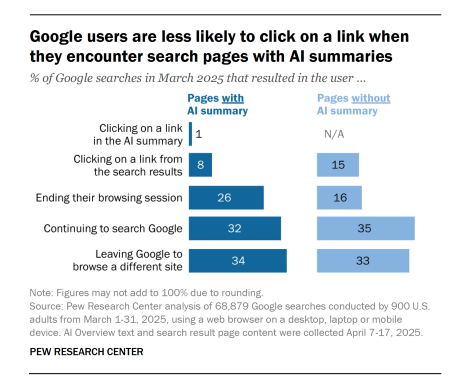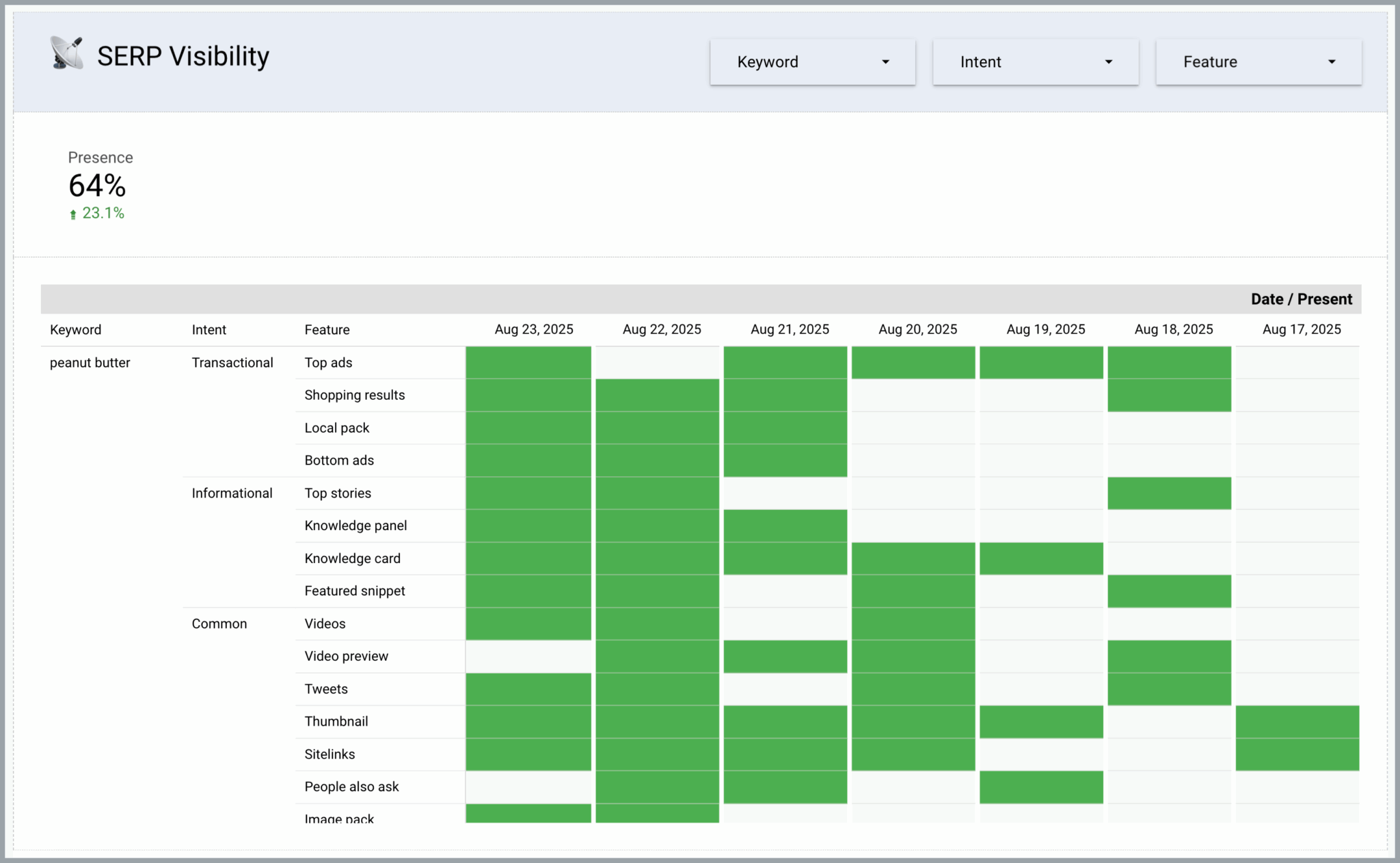The search visibility framework: Dominating every corner of the SERP in 2026

Search is having its biggest identity shift in decades, and your SEO strategy has got to keep up.
Now, the reality is that even when you win a top organic spot, you’re competing against AI Overviews that kill clicks before a user ever visits your site.
The good news is that while the SERP is more complex, it’s also more abundant.
The brands that are winning are orchestrating total visibility across multiple touchpoints so they capture every high-intent moment.
That’s exactly what the search visibility framework is built to do, and it’s my blueprint for thriving in today’s AI-driven, multi-format search landscape.
This article explores the framework, starting with its core principles, then breaking down its five pillars and ways to measure their impact.
The search visibility framework: Winning across every touchpoint
The search visibility framework is about omnipresence, and owning multiple placements on page one so you capture every high-intent moment:
- I want to know… (research moment).
- I want to go… (local intent).
- I want to do… (how-to or action-based).
- I want to buy… (purchase intent).
The goal is simple: appear in as many SERP features as possible for your target queries, including:
- Paid ads (PPC).
- Local services ads (LSAs).
- Map Pack (Google Business Profile).
- Organic listings.
- Featured snippets.
- AI Overviews.
- People Also Ask (PAA).
- Videos.
- Ecommerce/shopping (if applicable).
- “Things to Know” and “What People Are Saying” modules.
This approach to dominating the SERPs can:
- Maximize market coverage: When done well, you can appear in multiple slots in the SERP for the same query (for example, ad + local + organic + snippet).
- Diversify leads: As a result, you can generate traffic from intent-rich queries across multiple entry points.
- Build brand authority: Psychologically dominate the SERP, reinforcing trust and market leadership.
- Create search resilience: If one channel dips, others fill the gap.
Is this a brand-new concept? Not necessarily.
However, brands need to push this type of strategy even harder in the new age of SEO to even have a chance to compete, especially when AI Overviews are stealing the scene.
The growing need for total SERP coverage
By now, we’re all keenly aware of the impact Google’s AI Overviews is having on the search results.
Marketing teams are feeling the impact of yet another Google SERP feature that elicits zero clicks.
Up to 58% of people conducted at least one Google search in March 2025 that triggered an AI Overviews summary, Pew Research Center found. What did people do?
They only clicked on a traditional result in 8% of searches with an AI summary, which was about half of the 15% click rate on pages without a summary.

According to the research, only 1% of all visits lead to clicks within the Google AI Overviews summaries, and people were more likely to stop browsing when AI Overviews were present.
Search Engine Land’s Danny Goodwin reported Google’s response. They called the Pew research “flawed.”
- “This study uses a flawed methodology and skewed queryset that is not representative of Search traffic. We consistently direct billions of clicks to websites daily and have not observed significant drops in aggregate web traffic as is being suggested.”
Without data from Google, we’re left guessing if what they say is true. However, some research suggests there may be an increase in clicks in certain scenarios.
For example, this study from Terakeet found that being included in Google’s AI Overviews can significantly boost clicks, especially for transactional queries.
And, TrustRadius found that 90% of B2B buyers clicked on sources featured in AI Overviews.
The real challenge now is showing up in AI Overviews and holding prime positions across the rest of the SERP.
The search visibility framework is built for exactly this. It ensures your brand stays visible in every scenario, with or without AI Overviews.
Here’s how it works.
Get the newsletter search marketers rely on.
See terms.
The 5 pillars of the search visibility framework
The search visibility framework is a methodical approach to dominating five key areas of modern SEO: content, organic search, paid search, local search, and user experience.
Each pillar plays a unique role, but the real power comes from how they work together to make your brand more visible in the SERPs.
| Pillar | Action Items | Core Focus |
| Content | Video, structured data, and Core Web Vitals optimization. | Featured snippets, People Also Ask, AI Overviews, “Things to Know,” etc. |
| Organic search | Gain presence through keyword strategy, technical audits, and on-page optimization. | Organic optimization, AI Overviews optimization. |
| Paid search | Capture intent via Google Ads, LSA, and Shopping. | PPC, LSA, Performance Max. |
| Local search | Rank in the Local Pack and Maps for local queries. | Google Business Profile optimization, reviews, citations. |
| User experience | Use schema, videos, fast UX, and structured data to earn rich results and trust. | Video, structured data, Core Web Vitals optimization. |
1. Content
Within the search visibility framework, content is the connective tissue that feeds every other pillar.
Helpful content that:
- Is strategically structured for the SERP improves organic rankings.
- Strengthens paid ad landing pages.
- Boosts local profile relevance.
- Supports a smoother user experience.
2. Organic search
Traditional SEO is still the foundation for competing in the search results. It ensures your brand is discoverable across a wide range of queries.
When you maintain strong technical health, start with precise keyword targeting and use appropriate on-page optimization, SEO builds the relevance needed for every other pillar.
3. Paid search
Paid search continues to deliver fast visibility for competitive queries where organic placements are tougher to win quickly.
Within the framework, paid search works to fill coverage gaps and maximize exposure for those commercial micromoments.
4. Local search
Local SEO provides geographic dominance to your SERP strategy.
5. User experience
User experience ensures that every click, whether it’s from AI Overviews, organic, paid, or local, has the best chance of turning into a conversion. Here, traditional SEO matters.
Together, these five pillars create a multifaceted approach:
- Content builds relevance.
- Traditional SEO secures long-term rankings.
- Paid campaigns capture immediate opportunities.
- Local search wins high-intent nearby customers.
- User experience strategies keep visitors engaged.
When these elements work in unison, they compound visibility in the SERP.
Tracking the signals of SERP wins
Classic rankings data still has its place. However, it’s not enough on its own.
To measure the search visibility framework’s ROI, you need metrics that track your footprint across AI Overviews, SERP features, and funnel stages.
Beyond raw clicks, look for signals of influence like assisted traffic, brand mentions, and engagement, especially when click-through rates drop but your brand still appears prominently.
Key metrics to monitor:
- Executive KPIs: Business outcomes, leads, impressions, and share of voice.
- Paid performance: CPC, conversions, and ROAS.
- Local performance: Map Pack visibility, calls, reviews, and Local Pack rankings.
- Organic performance: Clicks, CTR, snippet wins, and content rankings.
- Content features: PAA coverage, video impressions, and FAQ schema results.
- Website health: Core Web Vitals scores, page speed, and schema errors.
- SERP coverage: Percent of features owned per target query.
- Visibility weight score: Weighted by SERP feature prominence.
- Conversion efficiency: How well traffic turns into leads/sales.
- Funnel stage visibility: TOFU content reach, MOFU conversion rates, BOFU decision support.
- AI SERP-specific analytics: Citation tracking, engagement in AI Overviews.
You can consolidate all of this into a single view with a custom SEO dashboard in Looker Studio (I share examples in my article here on Search Engine Land).

Armed with this data, you can re-optimize underperforming assets and reallocate efforts.
Going from uncertainty to opportunity
Search is not a straight path from query to click. Users and website publishers face a maze of AI answers and competing SERP features.
However, this doesn’t have to mean invisibility.
This framework is one way to re-engineer your SEO program to capitalize on every opportunity the SERP offers, rather than focusing on what’s been lost.







Recent Comments